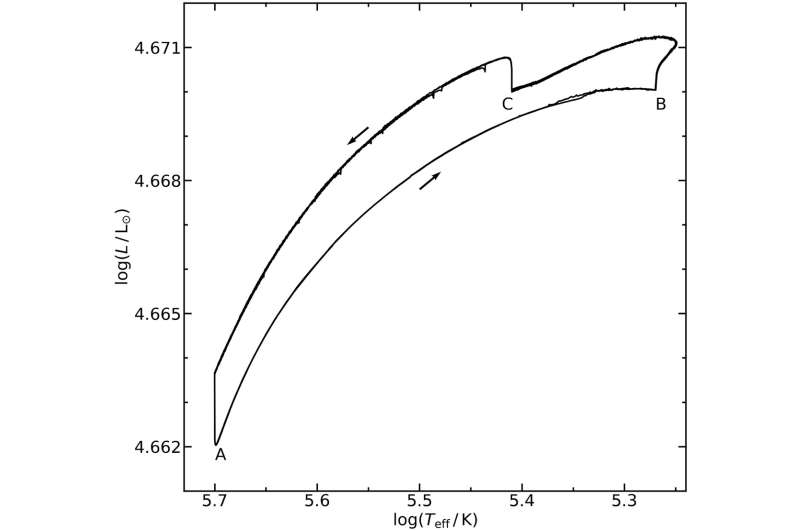Exploring the origin of the supersoft X-ray light curve

By simulating the feedback of the white dwarf (WD) to the periodic mass transfer driven by the X-ray irradiation on its companion, researchers led by Ph.D. candidate Zhao Weitao and Prof. Meng Xiangcun from the Yunnan Observatories of the Chinese Academy of Sciences have reproduced the quasi-periodic light curve of the supersoft X-ray source, which provides a new way to explain its origin.
Related results were published in Astronomy and Astrophysics on Oct. 7.
Type Ia supernovae are now being used as standard candles to measure cosmological parameters and thus examine the evolution of the dark energy equation of state with time. Supersoft X-ray sources are considered the most likely progenitor objects for type Ia supernovae.
A supersoft X-ray source consists of a WD and a massive main-sequence companion star. The WD accretes materials from its companion star and increases its mass until it reaches the Chandrasekhar mass limit, causing a type Ia supernova explosion.
The light curves of supersoft X-ray sources show a quasi-periodic variability of lightness and darkness. However, the reason of such quasi-periodic variation of the light curve of supersoft X-ray sources is still unclear.
Previous studies on this quasi-periodic light curve ignored the effect of supersoft X-rays on the companion star. The X-ray irradiation is expected to heat the companion star and change its effective surface boundary condition, which then attenuates the mass transfer rate of the binary system.
In this study, the researchers proposed periodically irradiating the companion star by the supersoft X-rays, which will cause it to expand and contract. As a result, the binary mass transfer rate increases and decreases periodically.
They used Modules for Experiments in Stellar Astrophysics (MESA) code to carry out 1D simulations, and adopted a periodic jagged accretion rate onto the WD instead of the periodic variability in the mass transfer rate.
Due to periodic variability of the mass accretion rate onto the WD, the WD photosphere periodically expands and contracts, which nicely reproduces the light curve of the supersoft X-ray source.
More information: Weitao Zhao et al, A robust model for the origin of optical quasi-periodic variability in supersoft X-ray sources, Astronomy & Astrophysics (2022). DOI: 10.1051/0004-6361/202243759
Journal information: Astronomy & Astrophysics
Provided by Chinese Academy of Sciences





















